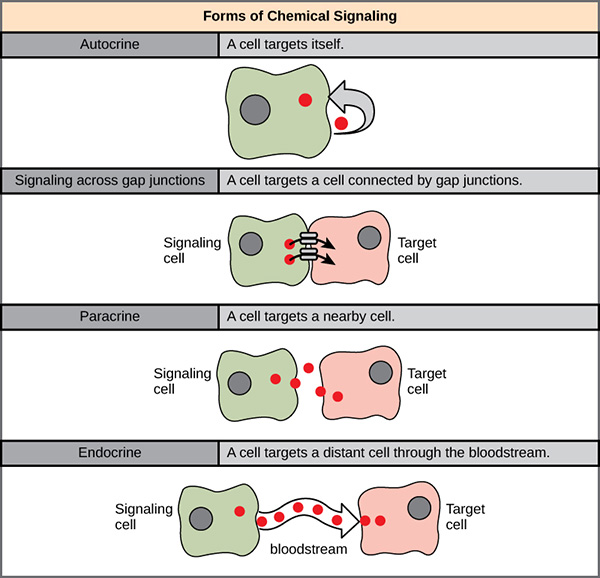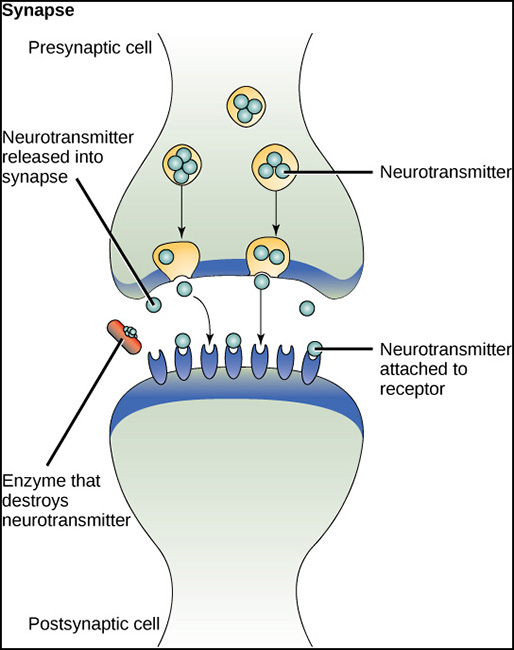| Endocrine Disruption |
Endocrine System : Types of Hormones Hormones are molecules that carry instructions from more than a dozen endocrine glands and tissues to cells all over the body. Humans have about 50 different known hormones, which vary in their structure, action and response. They control a variety of biological processes including muscle growth, heart rate, menstrual cycles and hunger. Hormones travel throughout the body, either in the blood stream or in the fluid around cells, looking for target cells. Once hormones find a target cell, they bind with specific protein receptors inside or on the surface of the cell and specifically change the cell's activities. The protein receptor reads the hormone's message and carries out the instructions by either influencing gene expression or altering cellular protein activity. These actions produce a variety of rapid responses and long-term effects. Hormones vary in their range of targets. Some types of hormones can bind with compatible receptors found in many different cells all over the body. Other hormones are more specific, targeting only one or a few tissues. For example, estrogens, the female sex hormones, can regulate function by binding to special estrogen receptor sites in uterine, breast and bone cells. In addition, the same cell can act as a target cell for many different regulatory molecules. For instance, the same uterine, breast and bone cells that accept estrogens, also contain progesterone, androgen, glucocorticoid, vitamin D and vitamin A receptors. Signaling Near and Far Hormones are classified (separated into groups) according
to how they travel in the body and their chemical structure.
Hormones released into the bloodstream from endocrine gland cells and special cells in the hypothalamus (neurosecretory cells) travel throughout the body looking for target cells. These hormones are similar to a television signal in that they are broadcast everywhere but can only be picked up and read by a cell with the right hormone receptor or antenna. IMAGE CREDIT: OpenStax, CNXParacrine, autocrine and synaptic are three types of local hormone signaling. In paracrine signaling, hormones are released into the fluid between cells (the interstitial fluid) and diffuse to nearby target cells. Hormones that influence secretions or other processes on the same cells that released them are said to be autocrine signalers. The more specialized synaptic signaling occurs between neurons (the nerve cells that make up the nervous system) and between neurons and muscle cells, allowing nerve cells to talk to each other and to muscles. back to top Chemical Structures Hormones are also grouped according to chemical structure. Structures dictate if the hormone prefers to be surrounded by water or fat (water or fat soluble), which determines:
Water vs. Fat Soluble Most water-soluble hormones, like the amino acid derivatives and peptides, can travel freely in the blood because they "like" water. However, they are repelled by lipid or fatty structures such as the membranes that surround the cell and nucleus. Because of this, these hormones generally bind to receptor sites on the outside of the cell and signal from there. Fat-soluble hormones, like the sex hormone steroids estrogens and androgens, are fat soluble and water repellent. That is, they "like" lipid or fatty structures such as those surrounding cells but are generally repelled by watery areas. Steroids generally travel to their target cells attached to a special carrier protein that "likes" water (such as, sex steroid hormone binding globulin and serum albumin). The hormones detach before passing into the cell where they bind to receptors. To get a better picture of this, think of oil and water. The two don't mix and separate into distinct layers. In this case, the amino acid derived and peptide hormones would prefer to be in the water layer, and the steroid hormones would prefer to be in the oil layer. Special carrier proteins that are comfortable in both oil and water can escort the peptide and amino acid derived molecules into the oil, and the steroid molecules into the water. back to top |

